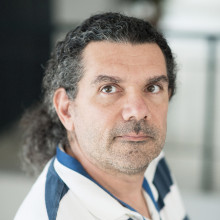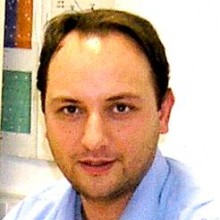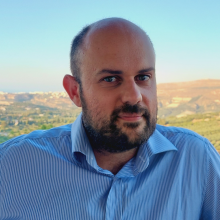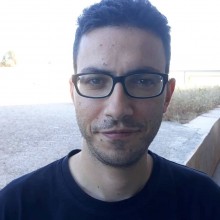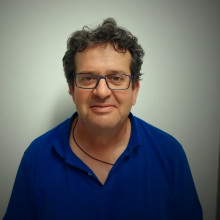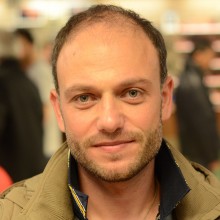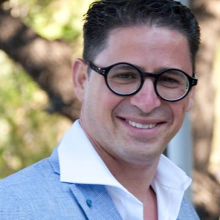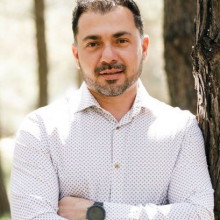Position Description
Functionalization of Graphene-related materials for electrochemical applications
For the full announcement, follow the link "Related Documents"
Required Qualifications
- PhD Degree in Chemistry or Materials Science
- Previous experience related to the position’s topic
- Previous publications in the position topic
- Good knowledge of English language, B2 level
Application Procedure
Interested candidates who meet the aforementioned requirements are kindly asked to submit their applications to the address (hr@iesl.forth.gr), with cc to Dr Emm. Stratakis (stratak@iesl.forth.gr).
In order to be considered, the application must include:
- Application Form (Form Greek or Form English to the left)
- Brief CV
- Scanned copies of academic titles
Appointment Duration
6 monthsPosition Description
Laser process for scaffold fabrication, drug encapsulation and release for tissue engineering.
Candidates in the field of Pharmacy and Life sciences are encouraged to apply. We are looking for an enthusiastic Ph.D. candidate to immobilize drugs on polymeric laser-based fabricated scaffolds and to study the interactions of the drugs with cells and scaffolds. Various fabrication techniques for the production of scaffolds will be applied.
For the full announcement, follow the link "Related Documents"
Required Qualifications
- BSc degree in Pharmacy
- MSc degree in Life Sciences, Biotechnology or related field
- Laboratory experience in a similar field (Soft lithography, polymers, statins, in vitro cell culture)
- Excellent knowledge of English
Application Procedure
Interested candidates who meet the aforementioned requirements are kindly asked to submit their applications to the address (hr@iesl.forth.gr), with cc to Dr Anthoula Ranella (ranthi@iesl.forth.gr).
In order to be considered, the application must include:
- Application Form (Form Greek or Form English to the left)
- Brief CV
- Scanned copies of academic titles
- Certificate for enrollment in a PhD program from a Greek university
Appointment Duration
12 monthsPosition Description
The candidate will participate in the R&D activities of FORTH-IESL in the context of PERCEIVE project and will work on software applications used for the automatization of data analysis and data visualization for imaging and spectroscopic techniques providing information on the nature and light-induced change of photosensitive materials on colour artworks. The researcher will be, however, involved in the overall research activities of PERCEIVE Project, aiming at improving the perception, preservation, curation, exhibition, understanding and access of coloured Cultural Heritage Collections and developing a reliable way to Study, Reconstruct, Render, Remap, Exhibit and Re-appropriate them.
For the full announcement, follow the link "Related Documents"
Related Project
PERCEIVE -Required Qualifications
- PhD in Physics or in Engineering, with a focus on imaging, spectroscopy, optics, and optical sensing
- Previous post-doctoral research experience and previous work in RTD projects
- Proven skills in Software development for spectral data processing
- Experience with cultural heritage studies (object analysis)
Desirable Qualifications
- Relevant scientific publications
- Innovative, autonomous, well-organised and result-oriented thinking. Ability and motivation to perform independent research. Prompt to cooperate with interdisciplinary and international teams
Application Procedure
Interested candidates who meet the aforementioned requirements are kindly asked to submit their applications to the address (hr@iesl.forth.gr), with cc to the Scientific Responsible, Prof. S. Sotiropoulou (sophiaso@iesl.forth.gr).
In order to be considered, the application must include:
- Application Form (Form Greek or Form English to the left)
- Detailed curriculum vitae (CV) of the candidate
- Scanned Copies of academic titles
Appointment Duration
6 monthsFunding

Position Description
The candidate will contribute to the implementation of the project, specifically in (a) provide support to academic and industrial users, visiting IESL to carry out research activities in the frame of the project and (b) the organization of education, training and networking activities on material research for a Circular Economy at European level.
For the full announcement, follow the link "Related Documents"
Required Qualifications
- PhD in Physical Sciences or Engineering
- Experience in experimental studies and analytical laser techniques
- Experience in analytical instrumentation and methodology development
- Work experience in the industrial field for the development of scientific instrumentation
Desirable Qualifications
- Ability and motivation to perform independent research
- Scientific publications
Application Procedure
Interested candidates who meet the aforementioned requirements are kindly asked to submit their applications to the address (hr@iesl.forth.gr), with cc to Prof. D. Anglos (anglos@iesl.forth.gr).
In order to be considered, the application must include:
- Application Form (Form Greek or Form English to the left)
- Detailed CV
- Scanned copies of academic titles
Appointment Duration
12 monthsPosition Description
Non-linear Imaging of Neuron cells
For the full announcement, follow the link "Related Documents"
Required Qualifications
- Bachelor's degree (B.Sc.) from a School of Sciences or a related school
- Postgraduate Diploma in a School of Sciences or a related school
- Experimental laboratory experience in non-linear microscopy techniques
- Relevant publications in microscopy techniques
Application Procedure
Interested candidates who meet the aforementioned requirements are kindly asked to submit their applications to the address (hr@iesl.forth.gr), with cc to Dr Emm. Stratakis (stratak@iesl.forth.gr).
In order to be considered, the application must include:
- Application Form (Form Greek or Form English to the left)
- Brief CV
- Scanned copies of academic titles
- Certificate for enrollment in a PhD program
Appointment Duration
6 monthsPosition Description
Design and development of main and auxiliary electrical circuits of electromagnetic shielding
For the full announcement, follow the link "Related Documents"
Required Qualifications
- Bsc in Electrical or Electronic Engineering
- Experience in the position topic
- Implementation of projects in the position topic
- Good knowledge of English language
Application Procedure
Interested candidates who meet the aforementioned requirements are kindly asked to submit their applications to the address (hr@iesl.forth.gr), with cc to Dr Emm. Stratakis (stratak@iesl.forth.gr).
In order to be considered, the application must include:
- Application Form (Form Greek or Form English to the left)
- Brief CV
- Scanned copies of academic titles
Appointment Duration
12 monthsPosition Description
Optical characterization of dielectric thin films for RF MMICs
For the full announcement, follow the link "Related Documents"
Required Qualifications
- B.Sc. in physical sciences
- Ph.D in optoelectronics
- Experience in Raman spectroscopy
- Experience in (micro)photo-luminescence spectroscopy
- Experience in time resolved spectroscopy
- Experience in electrical characterization of nanoelectronics components
- Good knowledge of English language
Application Procedure
Interested candidates who meet the aforementioned requirements are kindly asked to submit their applications to the address (hr@iesl.forth.gr), with cc to P.I., Dr George Konstantinidis (aek@physics.uoc.gr).
In order to be considered, the application must include:
- Application Form (Form Greek or Form English to the left)
- Detailed curriculum vitae (CV) of the candidate
- Scanned Copies of academic titles
Appointment Duration
12 monthsPosition Description
Synthesis and physico-chemical materials charaterisation
For the full announcement, follow the link "Related Documents"
Related Project
IN2SIGHT -Required Qualifications
- BSc in Physical Sciences
- Laboratory experience in materials sciences
- Expertise in structural, optical and electrical characterization of materials
Desirable Qualifications
Experience in the characterization of physical properties of matter
Application Procedure
Interested candidates who meet the aforementioned requirements are kindly asked to submit their applications to the address (hr@iesl.forth.gr), with cc to the Scientific Coordinator Dr Maria Farsari (mfarsari@iesl.forth.gr).
In order to be considered, the application must include:
- Application Form (Form Greek or Form English to the left)
- Brief CV
- Scanned copies of academic titles
- Certificate for enrollment in PhD program
Appointment Duration
2 monthsFunding

Position Description
Synthesis and physico-chemical materials characterization
For the full announcement, follow the link "Related Documents"
Required Qualifications
- BSc in Chemistry or Physics or Materials Science and Technology
- Master’s degree in Materials Science and Technology
- Laboratory expertise on materials
Application Procedure
Interested candidates who meet the aforementioned requirements are kindly asked to submit their applications to the address (hr@iesl.forth.gr), with cc to the Scientific Coordinator Dr Maria Farsari (mfarsari@iesl.forth.gr).
In order to be considered, the application must include:
- Application Form (Form Greek or Form English to the left)
- Brief CV
- Scanned copies of academic titles
- Certificate of enrolment in PhD program
Appointment Duration
2 monthsThe NANOMAT proposal aspires to inaugurate and establish the new domain of “Flexible (conformal) power RF nanoelectronics” through an ambitious innovative heterogeneous technological platform comprising organic based electronics and coolers, wide band gap semiconductor based Monolithic Microwave ICs (MMICs), Radio Frequency microelectromechanical actuators (RF MEMS) and acoustic sensors.
Principal Investigator
Scientific Staff
Technical Staff
Research Associates
Alumni
Funding




